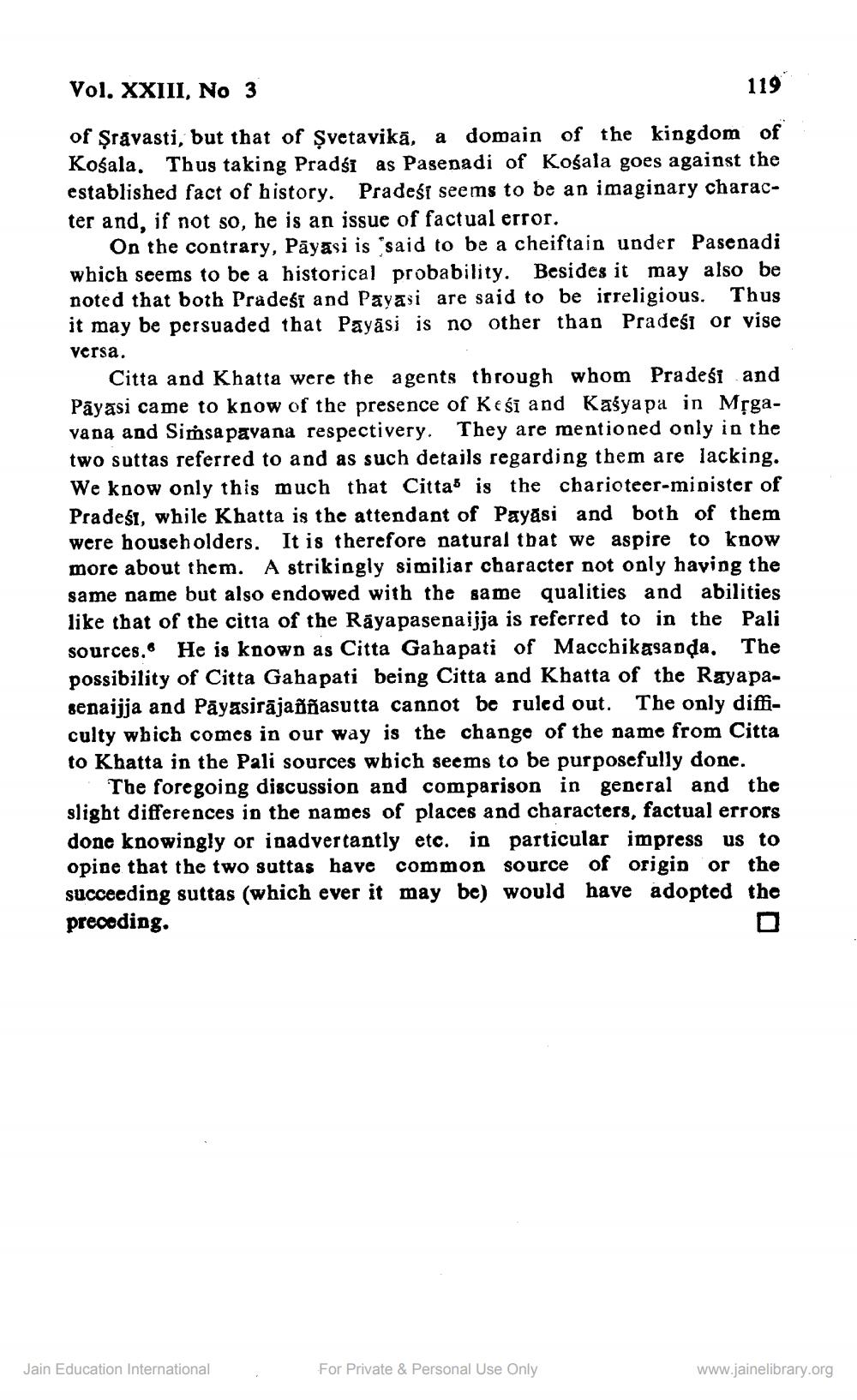________________
Vol. XXIII, No 3
119
of Şravasti, but that of Şvetavikā, a domain of the kingdom of Košala. Thus taking Pradšī as Pasepadi of Košala goes against the established fact of history. Pradesi seems to be an imaginary character and, if not so, he is an issue of factual error.
On the contrary, Pāyasi is said to be a cheiftain under Pasenadi which seems to be a historical probability. Besides it may also be noted that both Pradesi and Payasi are said to be irreligious. Thus it may be persuaded that Payasi is no other than Pradesi or vise versa.
Citta and Khatta were the agents through whom Pradesi and Pāyasi came to know of the presence of Kesi and Kaśyapa in Mrgavana and Simsa pavana respectivery. They are mentioned only in the two suttas referred to and as such details regarding them are lacking. We know only this much that Citta' is the charioteer-mioister of Pradesi, while Khatta is the attendant of Payasi and both of them were householders. It is therefore natural that we aspire to know more about them. A strikingly similiar character not only having the same name but also endowed with the same qualities and abilities like that of the citta of the Rayapasenaijja is referred to in the Pali sources. He is known as Citta Gahapati of Macchikasanda. The possibility of Citta Gahapati being Citta and Khatta of the Rayapasenaijja and Pāyasirājaðñasutta cannot be ruled out. The only difficulty which comes in our way is the change of the name from Citta to Khatta in the Pali sources wbich seems to be purposefully done.
The foregoing discussion and comparison in general and the slight differences in the names of places and characters, factual errors done knowingly or inadvertantly etc. in particular impress us to opine that the two suttas have common source of origin or the succeeding suttas (which ever it may be) would have adopted the preceding.
Jain Education International
For Private & Personal Use Only
www.jainelibrary.org




